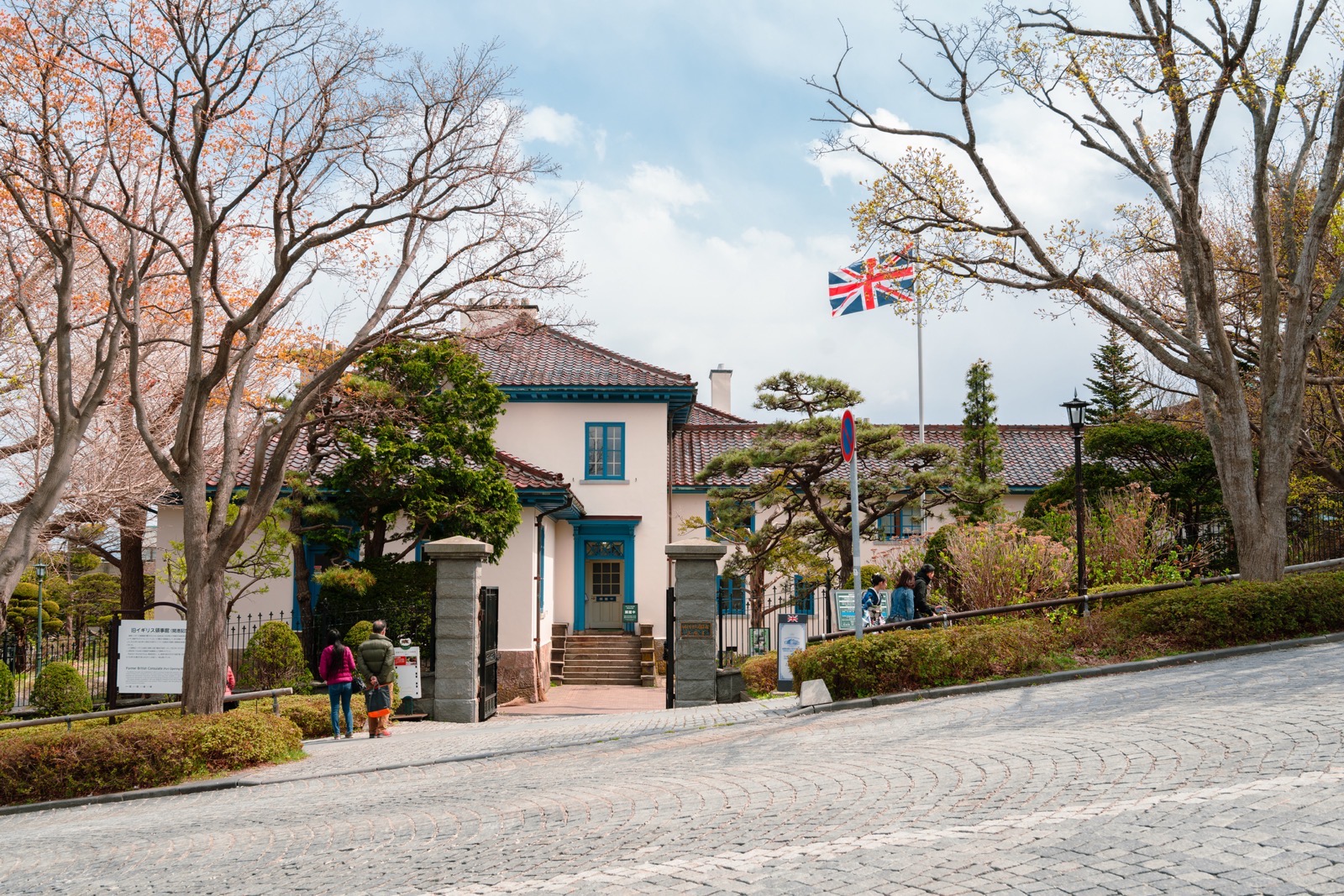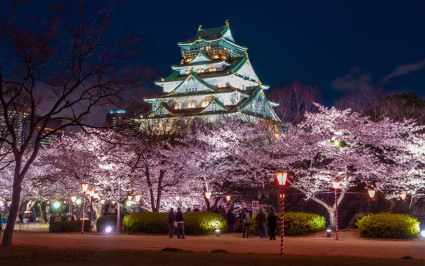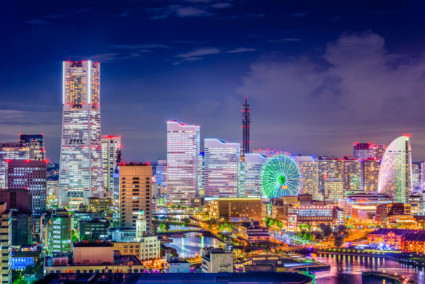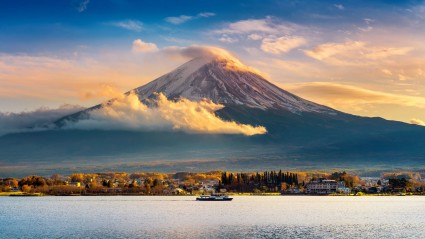While thoughts of Hokkaido often bring to mind images of winter sports, snow festivals and chilly weather — there's plenty more to see in Japan’s northern prefecture.
Located in the southernmost part of Hokkaido, Hakodate sits on the Kameda Peninsula facing the Tsugaru Strait separating the prefecture from northern Honshu. Famed for Japan's best night view from the summit of Mount Hakodate, the city also attracts visitors for its historical significance.
Hakodate was one of the first two Japanese ports opened to the U.S. in 1854 as a refueling site. It eventually became one of three international trading ports in 1859 alongside Yokohama and Nagasaki. Over the decades, Hakodate became a melting pot of local and global forces and the product of those exchanges can still be seen today.
So, whether you’re digging deep into Hakodate’s past, enjoying the city’s foliage and flora or sampling some of its famous cuisine — you’re in for a memorable trip.
Explore the past in present-day Hakodate

Hakodate is rich in historical experiences that stretch from the prehistoric age to the modern era.
See Japan’s modern transformation at Goryokaku
When Japan was opened up to American and European powers in the 1850s, Japanese leaders raced to update their military power in the face of the imperial West. Goryokaku, also known as the Star Fort for its five-pointed design, was completed in 1866 after Ayasaburo Takeda studied modern fortress design with the Dutch.
Starting from mid-April, more than 1,500 cherry blossoms come into full bloom making the grounds one of the top sakura spots in the city.
For a panoramic view of the area, head to the observation deck of Goryokaku Tower. The glass floor lets you experience the Star Fort in a new thrilling way. To learn more about the fortress and its place in the history of Hakodate, check out the Hakodate Magistrate’s Office located in the park.
Ofune archaeological site

Over 15,000 years ago, long before the age of samurai and geisha, there were the people living in the Jomon period (14,000-300 BCE).
On the outskirts of Hakodate, you can visit a Jomon era archaeological site dating back to around 3,500 BCE. Along with 16 other sites in Hokkaido and northern Honshu, the Ofune Archaeological Site was awarded UNESCO World Heritage status in 2021.
Based on extensive fieldwork, researchers have been able to reconstruct parts of the community.
The Jomon dwellings give you a chance to imagine the kinds of lives that people once lived in the area. You’ll also find information and guides to help deepen your understanding of this chapter of Japan’s distant past.
Gardens

Hokkaido’s natural beauty isn’t only reserved for the countryside and remote locations. During your stay in Hakodate, check out these gardens for colorful seasonal blooms.
Former British Consulate of Hakodate
Although there are grander gardens in Hokkaido, this one at the Former British Consulate of Hakodate comes with a unique setting and atmosphere. This building served as the British consulate for nearly 20 years beginning in 1913 before it was converted into a hospital and, finally, designated as a piece of Tangible Cultural Property by the city.
Once you make your way through the historical exhibitions inside, such as recreations of the consular office and a family room, you can head outside to enjoy the garden.
Surrounding the small fountain are several benches to take in the scene. If your timing is right, you can enjoy the roses in bloom. Perhaps the best way to appreciate the garden is from the Victorian Rose Tea Room located in the consulate. Look out onto the garden with English tea and scones served on Wedgewood dishware to complete the experience.
Kosetsu-en

Located in Miharashi Park, Kosetsu-en is a large garden constructed at the end of the 19th century by a wealthy merchant family.
With Hakodate bustling in international trade, the Iwafune family created this villa as a second home and eventually opened it to the public in 1927. Strolling through the park, you’ll find a blending of Japanese and Western influences from the teahouse constructed in a style borrowed from the feudal era to a wooden greenhouse reminiscent of contemporary Europe.
The best times to make the trip are spring and autumn. With hundreds of cherry trees, the garden comes alive with pink and white florals to celebrate the start of spring. From late-October to mid-November, the canopy overhead will erupt into fiery reds, making it one of the best places to see the autumn leaves in Hokkaido. Come back at night for an extra treat when the foliage is illuminated.
Cuisine

Hakodate’s food culture has been shaped by its history and geography. As one of Japan’s first ports in the modern period and its prime location by the sea, the city has plenty of dishes to whet your appetite.
Hakodate Morning Market
Conveniently situated a few minutes from JR Hakodate station, the Hakodate Morning Market is your best bet for fresh produce and seafood before lunchtime. With well over 200 stores on site selling a variety of foods, everyone should be able to find something to savor.
Hokkaido is famous for its seafood and the market regularly receives fresh catches. Depending on when you visit, you’ll find squid, sea urchin, atka mackerel, crab and more. As for fruits and vegetables, potatoes and melon are the prizes of the north and you’ll find them in abundance.
For a special experience, stop by a squid fishing tank where you’ll be able to catch the squid of your choice. Then, it’ll be cut and served up to you, ensuring the freshest possible dish.
Hakodate shio ramen

Hokkaido is famous for not one, but three kinds of ramen. Miso ramen is a must-try on trips to the southwestern prefectural capital of Sapporo, while shoyu (soy sauce-based) ramen completes a trip to Asahikawa in central Hokkaido. The final in the Hokkaido trifecta is Hakodate’s shio (salt-based) ramen which carries a light, but umami-rich broth.
According to legend, the predecessor of modern day ramen was first sold in Hakodate in 1884. These first bowls were likely closer to a Chinese-style noodle soup than the Japanese ramen we enjoy today. As Japan increasingly opened to the outside world from the mid-19th century onwards, culinary traditions from around the world found new homes in Japanese restaurants and kitchens, forming new recipes and dishes.
These days, Hakodate shio ramen’s broth is usually chicken or pork-based with a serving of thin noodles. Unlike the thicker broths mentioned above, Hakodate ramen is relatively clear, but nevertheless flavorful. Topped simply with bamboo shoots, green onions and thinly sliced pork, this bowl will leave you satisfied without feeling weighed down.
Plenty more to see

It’s hard to narrow down the highlights of a city to just a few points. We hope that these are enough to get you started for a weekend getaway. But, if you have some extra time or are making a return trip to Hakodate, here are a few more sites to add to your itinerary:
- Yunokawa Onsen
A hot spring within reach of the airport and overlooking the Tsugaru Strait. - Motomachi
A sloping road heading to the bay where foreign residents once lived at the turn of the 20th century. - Hakodate Hachimangu Shrine
A Shinto shrine over 100 years old and nestled into the base of Mount Hakodate.















No Comment
Login to comment